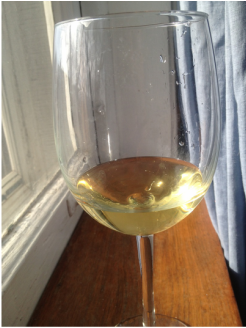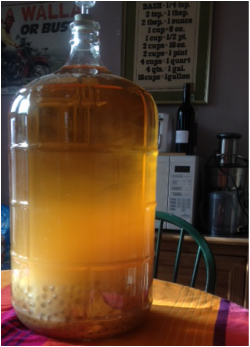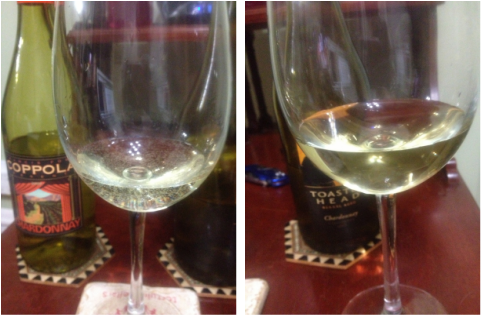Well, there are lots of different factors that come into play when it comes to agriculture in general. The first is the concept of a Growing Degree Day. This is basically the measurement of the heat available for growing plants in any given region.
Grapevines have their own GDD requirements, and this varies based on cultivar and even species of grapevine. Before planting a vineyard, growers should look up the GDD for their region and pick their grapes accordingly.
So which vines do best in the cold? Well, remember when we talked about some native American grapevine species being less susceptible to phylloxera? Well, some are similarly better equipped to deal with cold climates and fewer Growing Degree Days. Some vinifera (European) grapevine cultivars are also better equipped than others at dealing with the cold. This includes varietals like Riesling and Cabernet Franc (Chardonnay does ok in cooler climates too.)
However, what if you really don’t want to make wine from Native American grapes? Well, there are hybrids that have been bred between vinifera and native American cultivars with traits like cold hardiness being a prime selection factor- these often have been selected to taste less like the American varietals and more like the vinifera. However, many of them wind up with a pretty heavy vegetal, grassy flavor in whites, and what is referred to as a “foxy” flavor in reds (think of that distinctive concord grape flavor.) So… What else to do?
Well, remember grafting? Some growers will use vinifera plants grafted onto cold-hardy rootstock, depending on their region. Now, these aren’t a guarantee, as the upper part of the vine is still a European cultivar and therefore more susceptible to cold damage, but the below ground portion of the plant will tolerate freezing and bitter cold much better, which can sometimes alleviate some problems.
But, what else?
Well, in some climates, the growers will actually take the vines down off of their growing wires (if you’ve ever seen a vineyard, you’ve likely seen that the vines are trained up onto trellis wires- this is to maximize airflow and sun exposure) and then bury them in the soil for insulation during the winter. This will often protect the plant in that its sensitive buds are protected from the bitter freeze, but it is not always practical as it is extremely expensive- not only do you have to pay someone to take them down and bury them, then they have to dig them back up and re-train them to the wires in the spring (and you can’t outsource that delicate labor to a machine- pure manpower there!)
Watering at the right time after harvest can also help protect the roots from a terrible freeze. The water gets in there and insulates, but you also don’t want to overwater as this can send the wrong message to the vine and delay it from shutting down for the winter!
Site location is also a key factor. Even regions with plenty of GDDs can find themselves in a freezing bind. If your site has gullies or areas where cold air can pool, you can wind up freezing and damaging only a portion of the vines. In which case, it is best to not plant grapes at the bottom of these areas. Planting on a slope so that cold air can sink down and away from the grapes is a smart idea in cool/cold regions. And it is common for vineyards (including many in eastern Washington) to include wind machines to keep things moving in the winter. They’re expensive and do use electricity, but they’ll at least keep the air flowing and from settling and freezing out your plants.
As a side note, the majority of the grapevine structure actually CAN take a lot of cold- it is really the damage to the buds that is crucial. If the buds are damaged down to the innermost point, there’s pretty much no going back and you can lose years and years of growth. Sometimes the vine can be saved by cutting it all the way back to the ground and re-growing it from shoots at the base- in some cases, growers have to pull the entire vine out. Either way, it is a real bummer!
Bodies of water also can provide an insulating effect to vineyards and keep the climate a little warmer than the areas farther from the water. In southwest Michigan, the moisture and warmth retained from Lake Michigan provides enough of a buffer that many vinifera grapes can do pretty well. This is also true of the Finger Lake in upstate New York, and the Loire River in the Loire Valley. Definitely something to bear in mind if you’re looking for vineyard land!
So, while it is often a real fighting battle to grow grapes in cold or cool climates, with the right vinifera cultivar selection, the use of the proper rootstock or hybrid grapes, proper airflow and drainage, and the selection of the right site (no, grapes can’t truly grow anywhere…) then you can bravely wade out into the realm of cold climate viticulture.
Good luck!
Did you know?
Global warming is having a pretty noticeable impact on viticulture. Areas that used to be perfect for one cultivar are having to change their vineyard management strategies to deal with the increasing heat- some are even tearing out and planting different varieties. Conversely, areas that were once not suitable for grapes are becoming more and more desirable. Slate Magazine suggests Montana will be the new viticultural hotspot. Anyone wanna invest with me?



 RSS Feed
RSS Feed